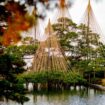
We are reader-supported and may earn a commission on purchases made through links in this article.
Japan is home to many intriguing destinations that draw huge crowds every year. They go in search of the country’s fascinating culture, beautiful landscapes, and incredible cuisine, but one little-known part of the country offering all the above has somehow managed to slip under the radar: the Ishikawa Prefecture.
Although it is virtually unknown to Western tourists, Ishikawa is ready and waiting, like a hidden gem, begging to be discovered by those looking for the ‘real’ Japan.
Planning a last-minute trip to Japan?
Top Experiences and Tours in Japan:
- See the sights with a tour of Tokyo: Full-Day Private Tour with Nationally-Licensed Guide
- See Mount Fuji on the Private Full Day Sightseeing Tour to Mount Fuji and Hakone
- Explore more with this tour of Tokyo Half-Day Private Tour with Government-Licensed Guide
Where to stay in Japan:
- Find accommodation with Booking.com
- Find your dream apartment in Japan with Agoda
- Find a hostel in Japan with Hostelworld
I began my trip to Japan in Tokyo, exploring the crowded streets and busy shops before catching a short flight to the Noto peninsula. As I left the skyscrapers behind, I headed west where ancient customs and traditions are strong, the landscapes are breathtaking, and practically every aspect of life is connected with nature.
The prefecture stretches from Kaga and Hakusan in the south to the Noto Peninsula in the north. In between are many fascinating cities and towns, such as the beautiful Kanazawa, the region’s capital.
Exploring the Heart of the Prefecture
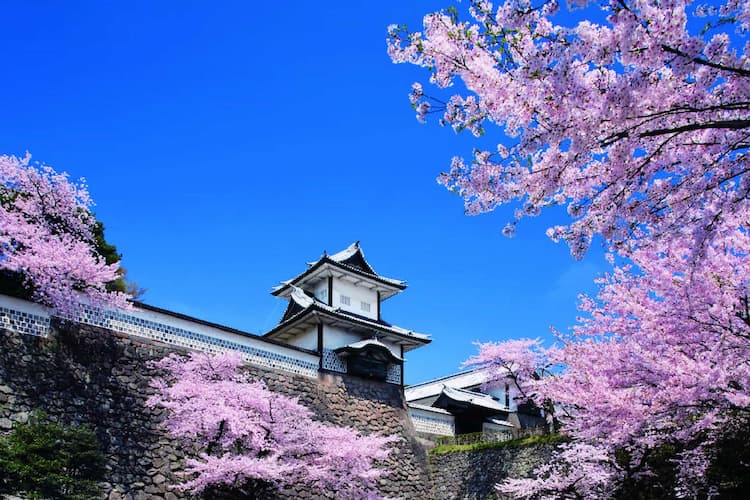
The city of Kanazawa itself held many surprises and I found myself increasingly intrigued by each experience. From exploring the three Geisha districts to learning about Samurai culture in the Nagamachi Samurai District, it was clear that age-old traditions and modern life blend seamlessly here.
The 21st Century Museum of Contemporary Art is a beautiful example of modern culture amid a historic city. This contemporary museum houses exhibits from contemporary artists who create thought-provoking works that push the boundaries of perception, such as the life-size Swimming Pool installation by Leandro Erlich that lets you experience the feeling of being in a swimming pool without the water.
As I entered through a below-ground entrance, I stood at the bottom and waved at people above ground looking down through the clear, water-covered ceiling.
It is impossible to get lost in the museum thanks to its circular design. The shape was intentional and carefully planned to reflect the shape of the planet and pay homage to the connection the people of Ishikawa have with the world that surrounds them.
Best Tips & Tools to Plan Your Trip
At the original city center is Kanazawa Castle, where visitors can stroll leisurely through the grounds of a historic 16th-century structure. Since its original construction, it has served many purposes: it was the seat of the ruling Maeda clan for fourteen generations and housed Kanazawa University for many years before opening up to tourists.
The castle grounds are also home to the Gyokusen-inmaru Park, a traditional garden on a gently sloping hill behind the castle. A walking path lets you enjoy the lush lawn and meticulously manicured trees surrounding a tranquil pond. My visit to the garden coincided with a gentle rain, creating a surreal experience as I relaxed in the garden’s teahouse for an afternoon service.
My gracious hosts provided a crash course in tea etiquette, including the proper way to hold your tea bowl (cradle the bowl in the palm of one hand while carefully holding it with the palm of the other), and served wagashi, a traditional sweet meant to accompany green tea.
This particular wagashi was shaped like a maple leaf and colored to reflect the reds, yellows, and greens of the fall season, demonstrating a subtle connection between the foods and the landscape of the region.
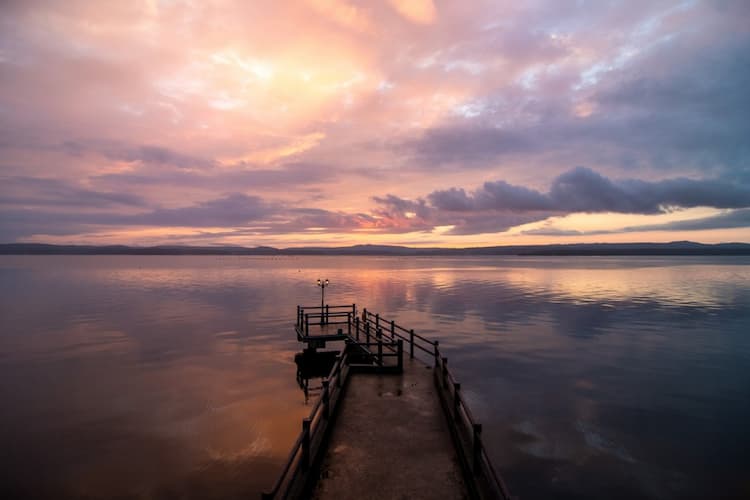
Nearby is the decorative garden known as Kenroku-en, one of the top three gardens in the country. Designed to provide a beautiful space for people to enjoy nature year-round, the nearly 25-acre garden features ponds, bridges, stone lanterns, tea houses, and multiple water features including Japan’s oldest fountain.
A variety of trees can be found throughout the garden, like cherry trees, plum trees, and Karasaki pines which provide a variety of colorful landscapes for every season.
The garden is known for massive spires that are constructed each fall, creating a shelter for the trees from the heavy winter snow the area is known for. While the spires are functional in purpose, they create a dramatic effect that makes the garden an iconic attraction for the city.
One of the best ways to discover the local vibe of a city is by exploring a street market and the Ōmichō Market in Kanazawa is one of the best. For more than 280 years, the market has served as a central shopping hub for the city.
Kanazawa is known throughout Japan as one of the top places to eat sushi, and this is where its finest chefs purchase their seafood each morning.
At first glance, the market is an overwhelming assault on the senses with busy shoppers flitting from stall to stall, but the deeper I ventured, the more I found myself captivated by the bustling activity and the variety of foods and products available in its 170 shops.
From locally sourced fruits and vegetables (like dancing mushrooms, so named because the growers play music to help them grow) to a variety of premium sakes, the market is a great place to familiarize yourself with the local foods and flavors of Ishikawa.
The market opens early every day, and even when it is closed in the afternoon, you can still grab some fresh sashimi from a vending machine (proof that Japan really does have vending machines for everything!).
The fish inside is changed out twice daily to ensure freshness and, while it took a bit of convincing to try, I must admit that vending machine sashimi wasn’t half bad!
The Flavors and Traditions of the Region are Evident in Every Bite
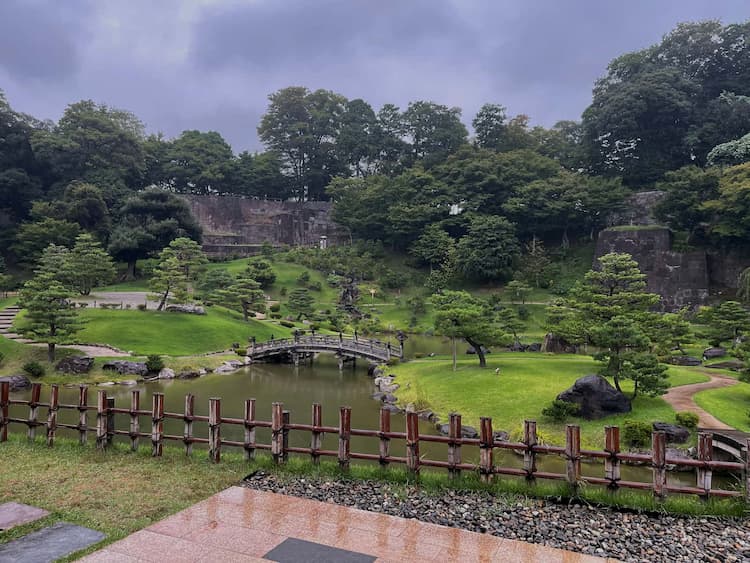
Venturing out of Kanazawa, I continued to learn how deeply connected the people of Ishikawa are to the land and the sea and what an important role nature plays in their daily lives. Everywhere I visited I encountered young people known as ‘U-Turns’ who had left their homes seeking better opportunities in cities like Tokyo.
These U-Turns soon find themselves inexorably drawn back to the fresh air and beautiful landscapes of their home, returning to work in various industries like tourism.
One such individual is Chef Ike Ahta, owner of L’Atelier de Noto. After receiving his training in Tokyo, he went on to study in France where he perfected his skills but missed the peaceful tranquility of his home in the small town of Wajima, nestled in the forest of Ishikawa’s Noto Peninsula.
He returned, bringing his French training with him, and got to work incorporating his talents and techniques with flavors readily available to him on the Noto Peninsula.
Boasting a Michelin star, this French-inspired restaurant showcases everything about the peninsula. From the seasonal menu to the choice of dishware and cutlery (all made by local craftsmen who keep centuries-old traditions alive), everything is carefully curated to preserve the spirit of Ishikawa.
Using his French culinary training as a guide, Ahta crafts incredible dishes like gazpacho-style fugu fish (puffer fish) with seaweed, mushrooms, and basil. This delicacy, which is poisonous if improperly prepared, is a testament to Chef Ahta’s ability to create a mouthwatering dish using the simplest of ingredients.
During my visit, I was able to learn about the traditions behind the sourcing of some of these ingredients, like the delicious rice Ishikawa is known for. The Noto Peninsula is home to the Shiroyone Senmaida Rice Terraces, a terraced hillside of 1,004 individually owned rice paddies directly on the shore of the Sea of Japan that dates to 1865.
Visitors can explore the rice fields, which are decorated from October through March with 25,000 LED lights, creating a beautiful nighttime display.
Accommodations that Blend Luxury with Nature and Tradition
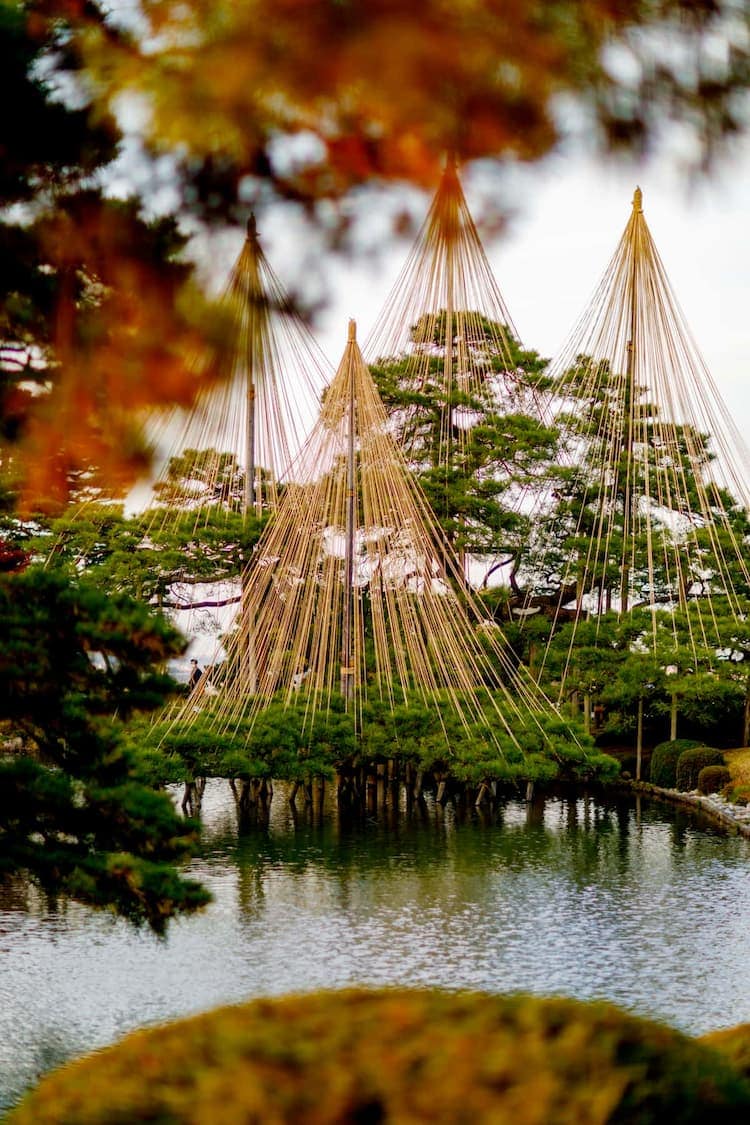
The prefecture offers a variety of accommodations that let you experience both modern style and local traditions. The ultra-modern Hyatt Centric in Kanazawa features Western-style rooms and dining options with both traditional local cuisine and Western dishes.
Outside of the capital, the region’s many ryokans, traditional Japanese inns that feature tatami (straw) mat floors, doting staff, and community baths, are an excellent option.
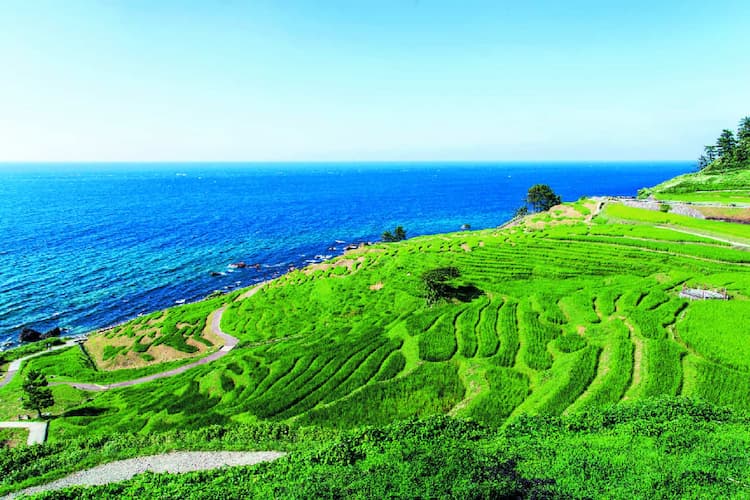
Ryokans are built around onsens, natural thermal baths, and offer access to communal bath houses as part of the stay. I was fortunate to experience several ryokans during my visit and quickly became enamored with the customs they observe, such as serving traditional Japanese meals and encouraging guests to wear yukata (informal kimonos for both men and women that are provided by the ryokan) to meals and while relaxing around the hotel.
The Tadaya Ryokan, located in the Wakura Onsen area on the Noto Peninsula is known for its tranquil surroundings and its direct connection with the sea. It wasn’t just the peaceful atmosphere and friendly staff that made me fall in love with this charming inn, it was the location right on the shore of Nanao Bay.
This ryokan comes complete with a fishing pier for guests to use. Ground floor rooms include private gardens where guests can fish directly from their rooms.
The region is a place of stunning natural beauty, exceptional food, and fascinating cultural experiences that I enjoyed from beginning to end. From the welcoming people to the serenity of the peaceful landscape, I will always have fond memories of my time the Ishikawa Prefecture and hope that others will soon discover this hidden gem that maintains Japan’s distinct culture, history, and personality.
If You Go
If you are planning a trip to the Ishikawa Prefecture, getting there is easier than you may think. Japan’s ANA (All Nippon Airways) offers short daily flights from Tokyo’s Haneda Airport to both Noto Airport in the northern city of Wajima and to Komatsu Airport in the south. Komatsu Airport can also be reached daily by Tokyo’s Narita Airport.
You can also conveniently reach the region via the Bullet Train from Tokyo Station along the JR Hokuriku Shinkansen Line. The trip takes just under three hours and takes you through Nagano.
Ishikawa gets a lot of snow in the winter and experiences high humidity during the rest of the year. Regardless of the time of year you visit, the weather can be unpredictable, and it is always wise to carry an umbrella with you, just in case it rains.
In Kanazawa House, a local tour company, offers exceptional tours and experiences designed to connect today’s visitors with the cultural traditions of the region. From learning to make sushi from an expert to enjoying a night with Geishas, known as Geigi in Kanazawa, these experiences will help you discover the ‘real’ Japan.
Inspire your next adventure with our articles below:
Author Bio: Eugenia Lazaris is a travel writer based in Los Angeles. She is a lifelong traveler who has no intention of stopping before visiting every corner of the globe. She currently resides in Los Angeles with her husband and her Jackihuahua, Max, where she is busy planning her next big adventure.
- Fiddle, Flutes & Pubs: A Musical Journey Through Northern Ireland & County Donegal - July 14, 2025
- Tokyo vs. Osaka: The Ultimate Face-Off for First-Time Visitors to Japan - July 14, 2025
- When Is the Best Time to Visit Iceland? Find Your Perfect Month for Budget, Weather, and Activities - July 14, 2025

